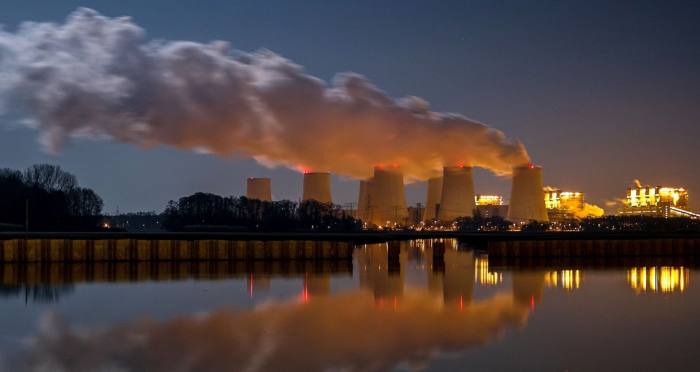Spain counts cost of agribusiness in rising desertification
Spanish economy updates
Sign up to myFT Daily Digest to be the first to know about Spanish economy news.
The heatwaves and forest fires that swept through the Mediterranean this summer gave Europeans a grim lesson in the dangers of climate change. But many experts are just as worried about a longer-term affliction: desertification.
An often irreversible process, desertification is a growing problem in Europe — especially in Spain where about a fifth of the country is already affected.
“Desertification is one of the world’s big four environmental areas of concern, together with climate change, biodiversity loss and pollution,” said Elias Symeonakis, an expert on the subject at Manchester Metropolitan University. “We depend on those areas that are degrading . . . for our food and our population. Once they are degraded, there is not much you can do.”
Desertification can conjure up romantic images of sand dunes. In fact, the process is more banal. It refers to the degradation of land in dry areas that makes it unproductive and infertile.
The main cause is often human action, such as overfarming and excessive irrigation, which erodes soil and drains aquifers. The problem exists on a daunting scale in Spain, where agriculture has steadily industrialised and three-quarters of the landmass is already generally dry or semi-arid.
“Spain is the EU country at greatest risk of desertification,” Teresa Ribera, deputy prime minister and minister for the environment, told the Financial Times. She said the government was planning to set out a national strategy this autumn, its first in 13 years.
Regions in Spain’s south-east and east are among Europe’s worst affected, partly because they are cut off from the more temperate north by mountain ranges. But desertification is also happening in Italy and Greece. The crisis is graver still in north Africa, in the Palestinian territories and in Mozambique. In the US, overuse of water, combined with recent droughts, is steadily drying up the American West.
The prospect of the world’s temperature rising 1.5C from pre-industrial levels by 2040, as highlighted in this month’s Intergovernmental Panel on Climate Change report, makes matters worse. Ever more common forest fires can wreak havoc on the fertility of top soils. Hot summers can also turn the soil into dust while extreme rains wash it away.
In Spain, about 20 per cent of land is already desertified, largely for historic reasons such as the destructive mining and overfarming that followed the change of use of land expropriated from the Catholic church in the 18th and 19th centuries. In such areas, productive land has become incapable of yielding substantial crops for human or animal life, although some vegetation may hang on.
Satellite imagery shows that a further 1 per cent of Spanish territory is actively degrading because of intensive agricultural practices, although a greater area is indirectly affected, too.
“It is like a black hole,” said Gabriel del Barrio, a researcher at the state-run Arid Zone Experimental Station in Almería, one of the most affected areas. “This 1 per cent endangers the countryside for kilometres around it . . . using up water and causing other damage.”
He added that, contrary to a common misapprehension, desertification does not signify the advance of the desert. “The Sahara, for example, is a very mature system,” he said. “Instead, this is about the non-sustainable overuse of natural resources that are replenished very slowly, if at all.”

In contrast to any pristine Saharan sands, desertified lands such as the Sierra de Gádor in Almería have thin soil lightly covered by vegetation. Meanwhile, rapidly desertifying territory in the east of Spain can appear lush and green because of water commandeered from a much wider region.
Del Barrio, like many other experts, links desertification to altered land use, the industrialisation of agriculture and intensive irrigation. Such changes have helped increase Spain’s income from agriculture by almost 50 per cent in the decade to 2020. But agri industry also uses almost seven times as much water as all Spanish homes.
Such use of the earth’s resources can exact a heavy toll. About a quarter of the country’s aquifers are overexploited, according to the EU. Modelling by Jaime Martínez Valderrama at Alicante university indicates that the soil for wheat and sunflower crops in Córdoba province could be exhausted in six decades.
The olive industry is another example. Spain has been renowned for olive oil exports since Roman times. But while the crop traditionally requires little to no irrigation, it is now often grown in high-density orchards where the plants resemble bushes rather than trees.
Climate Capital

Where climate change meets business, markets and politics. Explore the FT’s coverage here.
Are you curious about the FT’s environmental sustainability commitments? Find out more about our science-based targets here
These can be machine-harvested, a big advance in productivity from the age-old tradition of farmworkers beating trees until the olives rain down. But such intensive farming also has greater water needs.
In the provinces of Jaén and Granada, the olive industry is the main water user. In Andalucía, agriculture is responsible for almost 80 per cent of the region’s total water consumption.
Industry groups say that more efficient irrigation systems have enabled agriculture to reduce its water use this century. Even so, over the past decade the sector’s consumption has climbed again. Experts worry that current trends are unsustainable.
“It’s an old saying: ‘The more water, the sweeter the fruit’,” said Vicente Andreu Pérez, a senior researcher on desertification at Spain’s National Research Council. “But we can’t increase agricultural profits indefinitely. Everything has a limit and if we arrive at the limit in this case we won’t be able to go back.”
Follow @ftclimate on Instagram